On June 27th, 2012, I posted for the very first time on my original blog, The Natural World. I was going into my senior year of high school, and was very eager to talk about dinosaurs and other animals on the World Wide Web. It’s been almost four years now since I first started that blog, and I’ve changed a lot (at least I keep telling myself I have). Last year, I decided to try and go through the several hundred blog posts I had posted and attempt to bring them up to date, both with any recent scientific advances, but also with a greater sense of academic rigor. This task was daunting, to say the least, and difficult to do. I was essentially rewriting posts that I no longer had a great deal of interest in, which kept me from trying to create new and interesting posts that were more relevant to my life today. My friends suggested starting over, and the idea of a fresh start definitely appealed to me, so here we are. I’m changing the name of my old blog to “The Natural World: Archives,” and this new blog is “The Natural World: Connections.”* I’m really looking forward to being able to take advantage of the exciting features that WordPress has to offer, and I think I’ll be able to offer up a better system of picture viewing, as well.

The new blog, replete with a brand new blog logo. Over the next few weeks, I’ll probably start explaining where some of the images in the logo actually came from.
The main focus of the blog has not changed, I still aim to promote fun and educational natural history reading. However, the scope of my topics has definitely broadened, and some posts may be a little more off topic than others. From everything that I’ve ever learned about learning, I believe that making connections is one of the best ways to learn about something new. If you can connect a topic to something that you understand better, it will take less time and energy to understand. It’s with these ideas in mind that I’m going to haphazardly construct my posts.
I have just returned from the study abroad program “Semester at Sea,” where we got to visit a number of different countries around the world, and make some amazing friends in the process. For this introduction post, I thought I would share a few of the pictures that I got over the last four months, more or less in order.

Crossing the majestic Pacific Ocean. It was easy to sit out on deck and watch the waves for hours. During the Pacific crossing, we were able to spot a number of different seabirds, including several species of albatross and booby, several whales, a number of dolphins, flying fish, and believe it or not, a random owl an entire day out from Japan (and yes, I do have the photos to prove it).
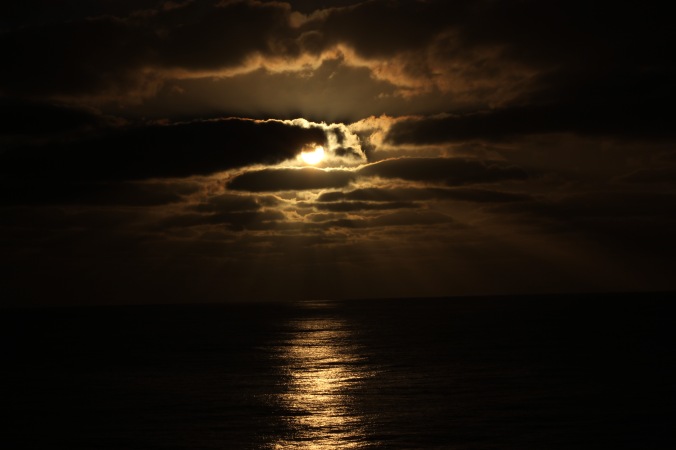
Sunrise on the Pacific.

Our first foreign stop was Japan. On day three, I went with a few of my friends to Hakone to try and see the stratovolcano Mount Fuji. We got really lucky, and fortunately it was a pretty clear day.
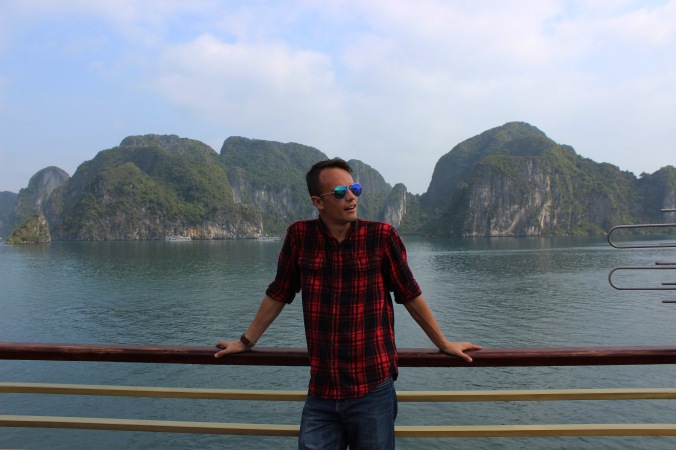
In Vietnam, I got the opportunity to check out the fascinating karst landscape of Ha Long Bay.

Our ship, the MV World Odyssey, was docked in Cochin, which is also the location of the Southern Naval Command of the Indian Navy. As such, we got the opportunity to spot a number of the Navy’s ships steaming through, sometimes even conducting exercises. In this photograph, we have the INS Sagardhwani (A74) on the left, and the Sukanya class offshore patrol vessel INS Savitri (P53) on the right.
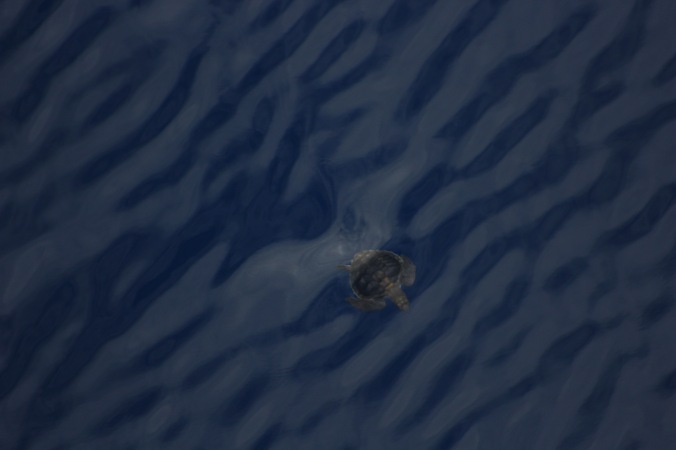
For the most part, the seas were very calm between India and Mauritius, and by spending a lot of time out on deck, I was able to see some pretty exciting animals! I’m fairly confident that this is an olive ridley sea turtle (Lepidochelys olivacea), based on the asymmetry of the costal scutes on the back of the animal.
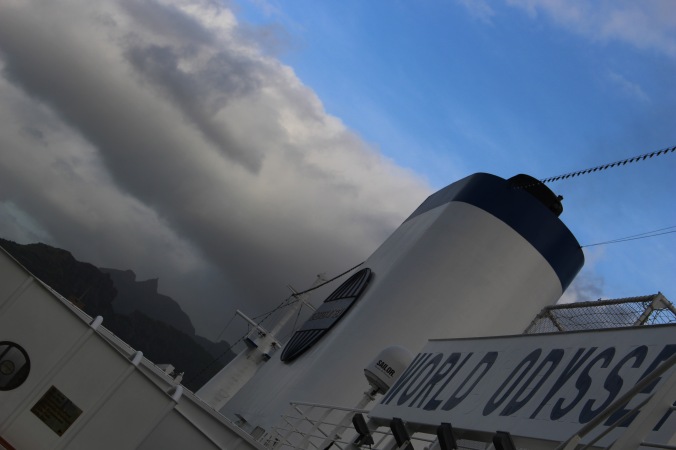
A few of the mountains of Mauritius from the top deck of our ship, the MV World Odyssey (or the MS Deutschland for you German fans of Das Traumschiff). Until recently, Mauritius was the only home of the flightless pigeon-cousin, the dodo.
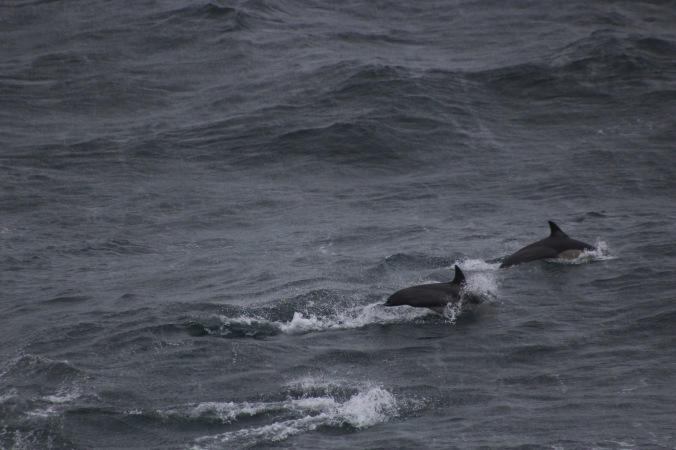
Dolphins are not my specialty (and neither are sea turtles), but with the help of the Internet and the interpretive labels at the Iziko South African Museum, I have identified this dolphin as a long-beaked common dolphin (Delphinus capensis). In the days leading up to our arrival in Cape Town, South Africa, the marine life became increasingly more abundant. For the first time since we departed Mexico, we were able to see seals, and we also spotted several enormous pods of dolphins, a very high concentration of seabirds, and even two sharks!

Here I am at the Iziko South African Museum in Cape Town. They had a fantastic exhibit on paleontology, focusing a lot on the local Permian Karoo fauna. They had some dinosaur fossils as well, including these mounted casts of the spinosaur Suchomimus attacking a juvenile Jobaria, a type of sauropod, long-necked dinosaur.

Here is a baby African elephant (Loxodonta africana) in Kruger. Unfortunately, elephant overpopulation has become a real issue in the park.

I wasn’t about to leave South Africa without getting my first chance to see penguins in the wild, even if it meant getting back to the ship late (a possibility that, for a period of time, we thought might be reality). We got lucky, and were able to see a number of African penguins (Spheniscus demersus) relaxing on land in Simon’s Town.

Our next stop was Ghana, where we spent our first night in a treehouse in Kakum National Park. We got to do the canopy walk early in the morning, which was an amazing experience as well.

My friends Cal Larnerd and Haley Collins and I visit the Shai Hills Resource Reserve in Ghana, where we had a guide who worked at the park drive around with us in the taxi (on the right is our taxi driver, Yaw).

In Morocco, we spent a very long time on bus rides to get to the Sahara Desert. It was pretty crazy to think that just a week and a half before, we had been in a rainforest.

Before I went home to Colorado, I spent a few days in England, Ireland, and Scotland. Here’s a picture of the famous Loch Ness. Unfortunately, I saw no sign of the Loch Ness Monster.